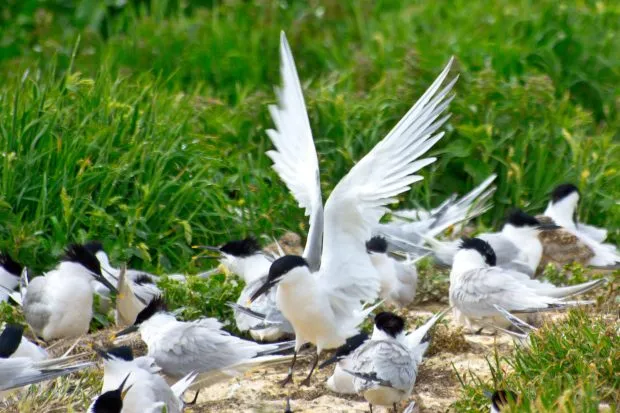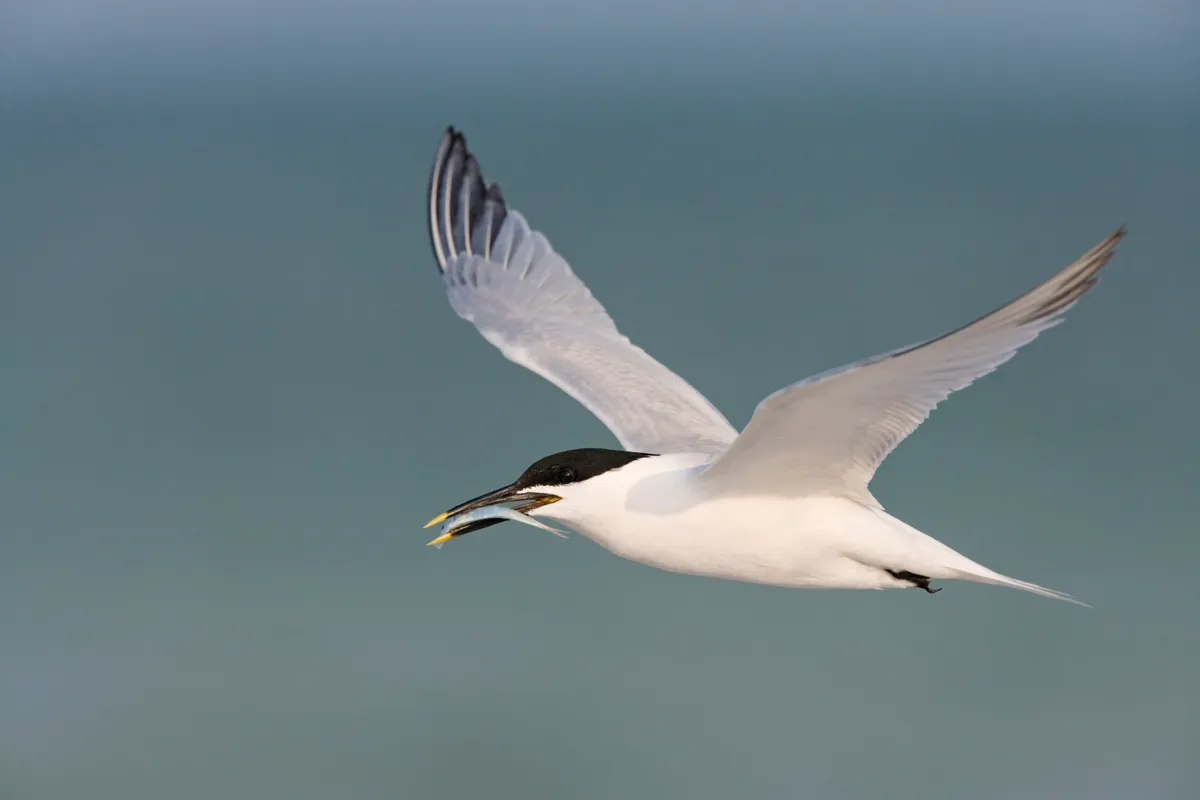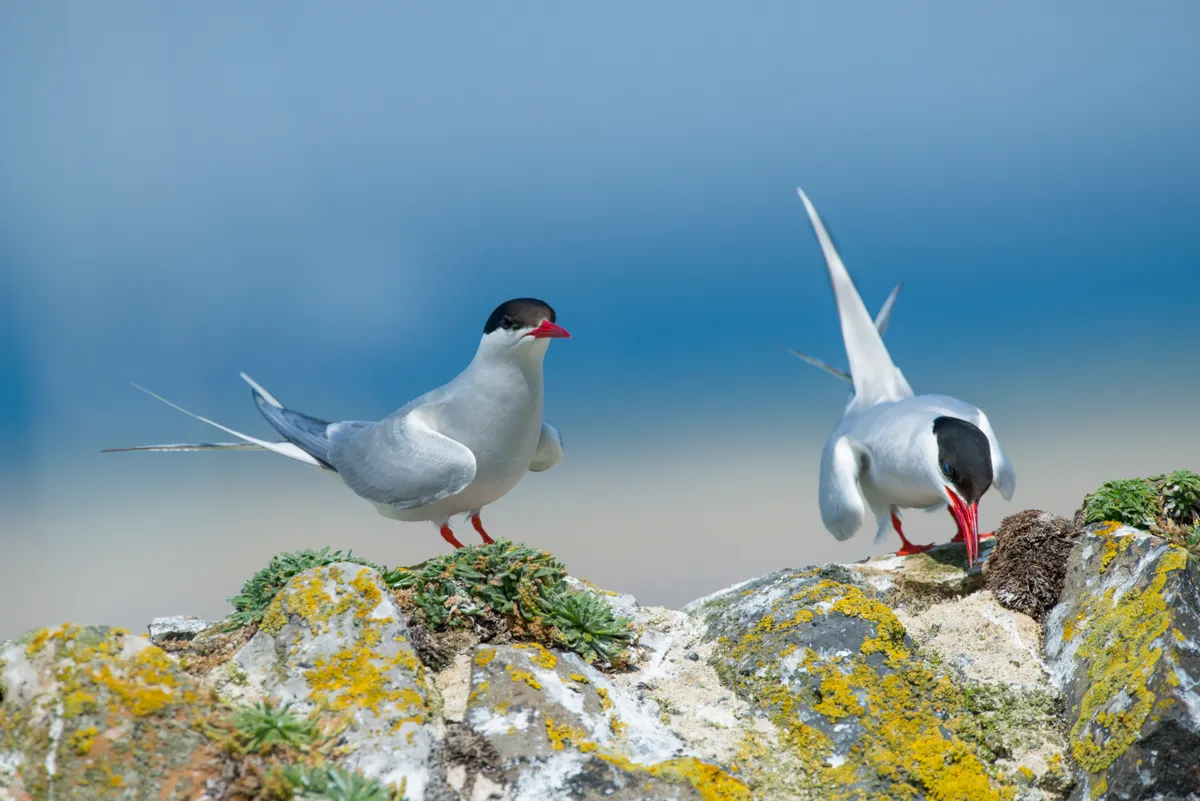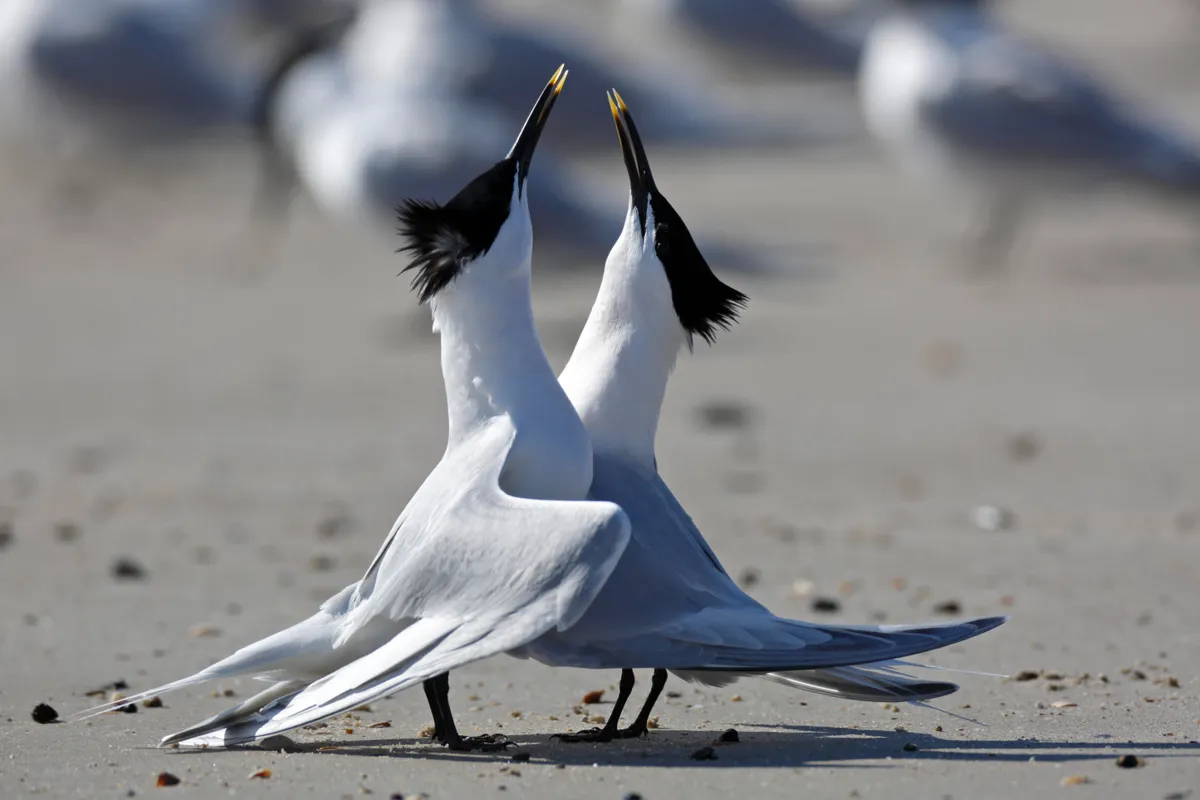Our largest tern, the sandwich tern (Thalasseus sandvicensis) is the same size as a black-headed gull, but its features are much more pointed – bill, wings and a shortish tail.
This is a common seabird, with 14,000 breeding pairs, and can be seen from March to October (with a few overwintering) along Britain's shores.
In this guide we take a closer look at the sandwich tern, including what they look like, breeding and migration patterns.
- Interested in learning more about Britain's birds? Check out our guides to puffins, gannets and auks.
Sandwich tern identification
The sandwich tern shares the black cap of most terns but it’s the only one with an obvious crest, visible at least in spring and early summer before being moulted. It looks rather like the crest feathers were hurriedly smartened up with a hairdryer.
The bill is long and black, and it has a yellow tip ('the mustard in the sandwich'). However, perhaps the most obvious feature of a sandwich tern, especially from a distance, is its whiteness. It looks like a good advert for a washing powder, a contrast to the obvious greyness of common terns and Arctic terns, which are also significantly smaller.

Sandwich tern distribution and habitat
The sandwich tern is very much a coastal bird, most unlikely to be seen anywhere inland, but it is reasonably common and widespread. It often hovers well above water, with its head pointing downwards, before executing an impressive headfirst dive to grab fish near the surface. Listen out for its call, a far-carrying kree-ick, which somebody has cleverly likened to the sounds made when the dentist presses amalgam into your tooth when filling it.

Terns of Britain
Arctic terns, common terns and little terns grace Britain's shores in the summers months. Learn how to identify them – and other tern species – with BBC Countryfile Magazine's guide to terns.

Sandwich tern breeding, eggs and chicks
Sandwich terns breed in colonies; if you visit one, take the earmuffs with you. The birds lay eggs on beaches and on islands within lagoons, without building a nest. If anything goes wrong and the colony is disturbed, the birds simply abandon it for the year. Otherwise, colonies are places where fish are brought in; either males feeding their mates, or hassled adults bringing offerings to their insatiably hungry chicks.

Sandwich terns follow a modern human trend of young being dependent on their parents for a long time, even once fully grown. You can sometimes see a sandwich tern youngster haranguing its parents on migration, or even after arrival in the winter quarters in West Africa.
Seabirds of Britain
Discover some of the UK's most common types of seabird, where they live and the best places to see them with BBC Countryfile Magazine's guide to seabirds.

